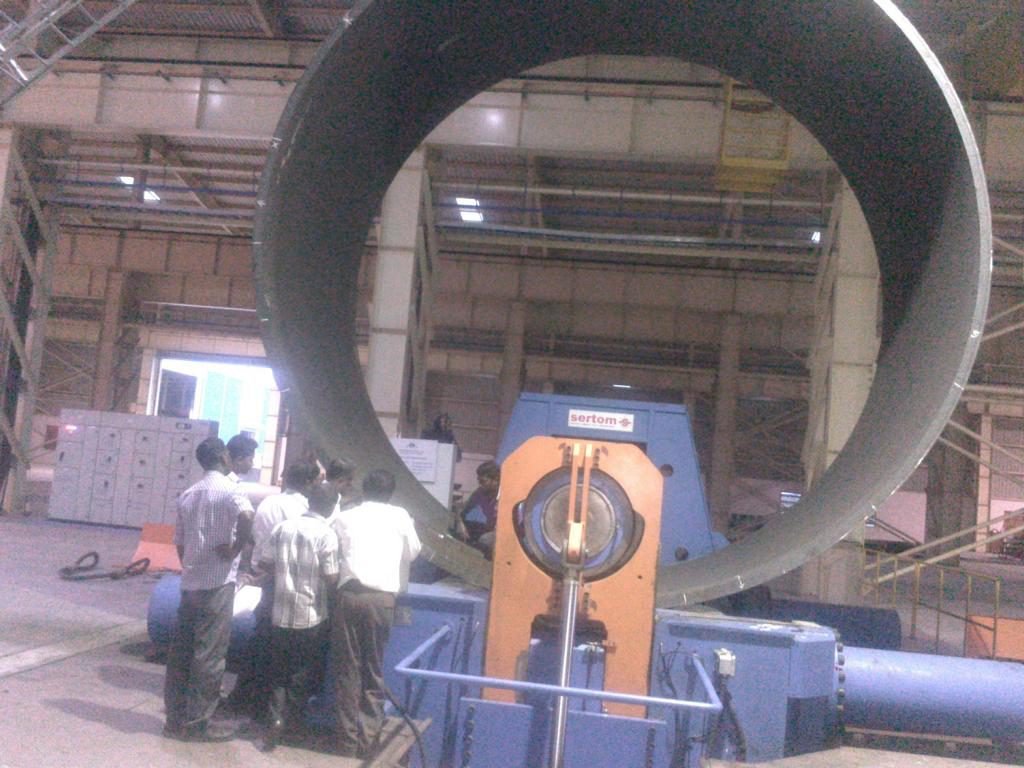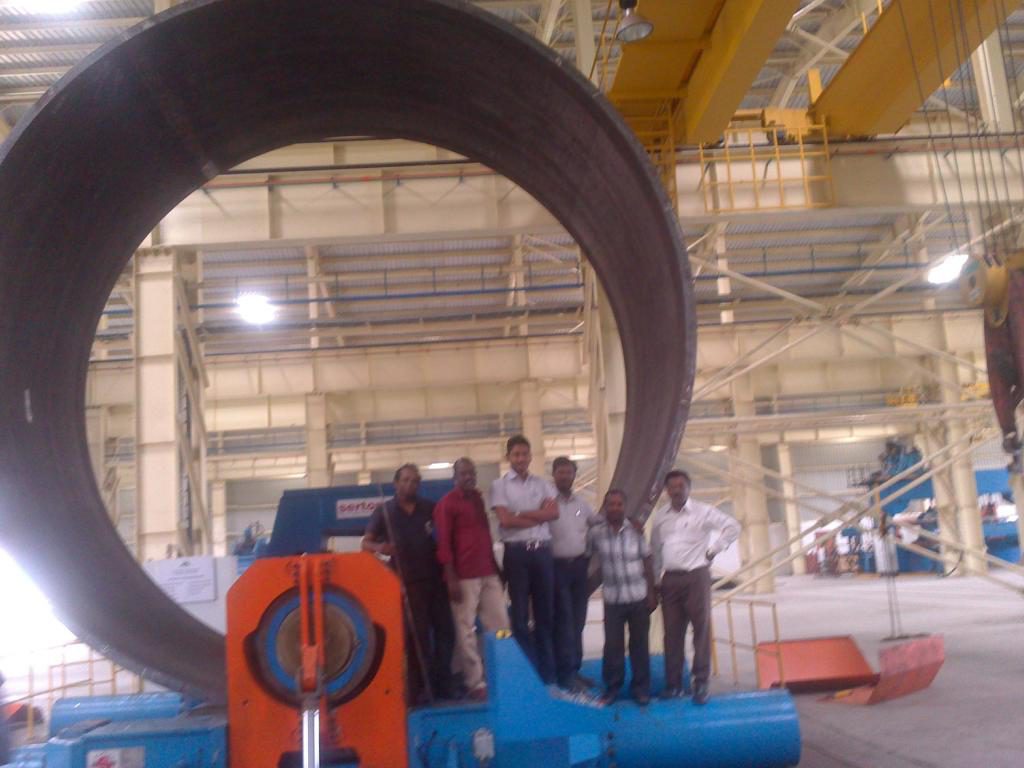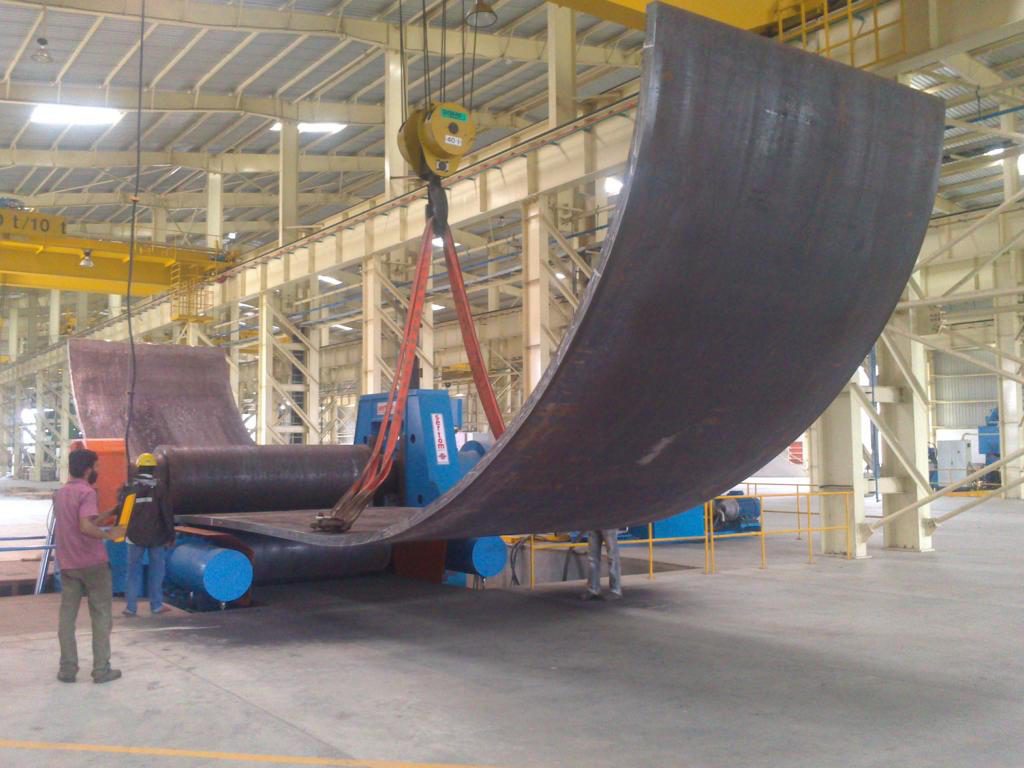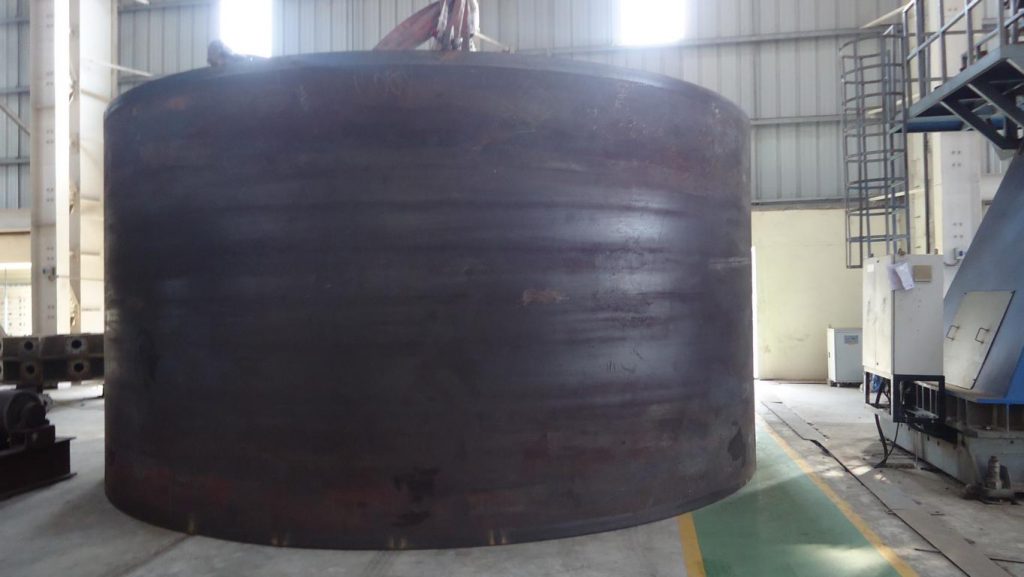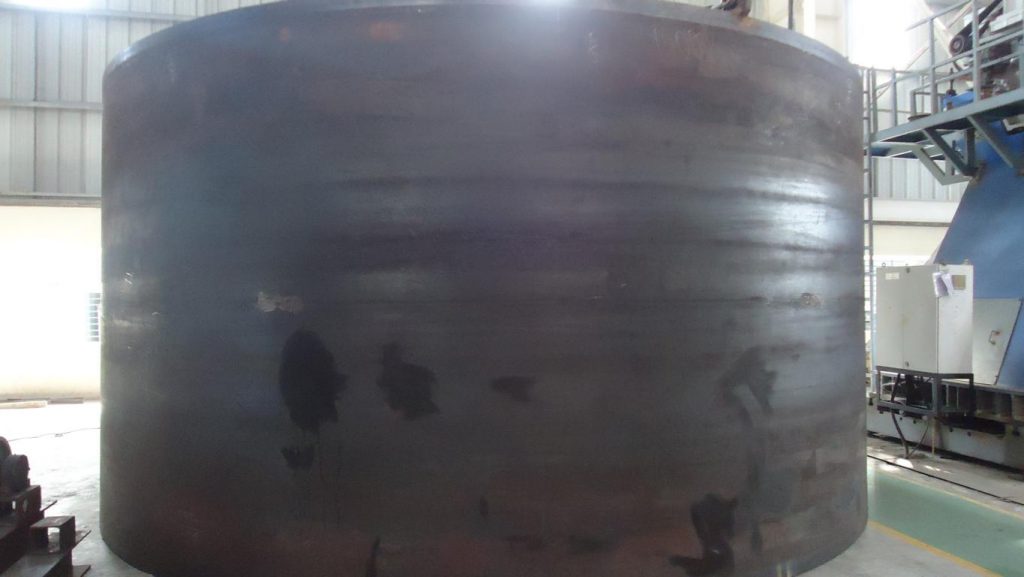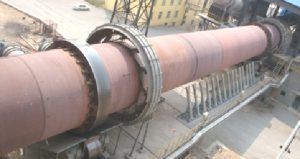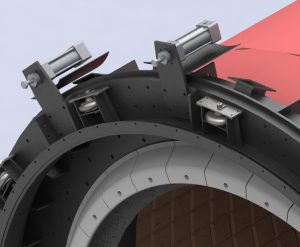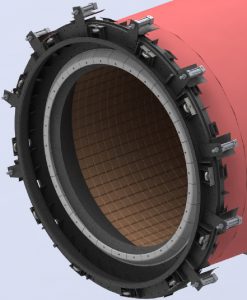
Rotary Kiln
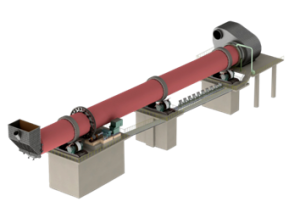
Rotary kilns are used to produce materials, such as cement clinker, alumina, magnesia, ceramsite and lime under high temperature. The TPD range from 1000 to 14000 and the Dia vary from 3Mtrs to 6.2 Mtrs.
Structural Features:
- Kiln shell degree of natural deflection and rotation angle of kiln supports are carefully designed, which extends the service life of refractory lining
- Kiln support rollers are equipped with floating roller bearings with large diameter and small L/D for higher reliability
- Spring lamellan are attached to seals to the kiln inlet, which serve as an insulation layer and increase service life.
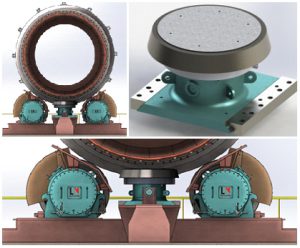
THRUST ROLLER:
In order to ensure uniform use of the contact surfaces between tyres and supporting rollers, as well as the girth gear and pinion, the axial motion of the rotary kiln is hydraulically controlled. The hydraulic thrust roller mechanism counteracts the forces which are generated by the slope of the kiln.It operates automatically and is controlled by non-contact
ROTARY KILN with Two Supports:
This type of rotary kiln has two kiln supports with kiln L/D <12.5. Design features are as follows:
Structural Features:
- Statically determined structure ensures even distribution of forces onto the 2 supports Kiln support.
- Low heat load per unit cross-section, low consumption of refractory. High equipment reliability by avoiding mechanical overload.
- Minimum space requirement, translating into low investment in land acquisition and civil works.
- Good ventilation through kiln-good adoptability for raw material and fuels, possibility of increasing production.
- Low maintenance costs.
Technical advantages of Roller drive Kiln:
- The unique structure design of splined tyre and shell shim plate guarantees the 100% synchronous operation of shell and tyre; it can also transform the radial force along shell to the tangential. In this way, the deformation of shell could be effectively restricted and the service life of refractory brick is prolonged.
- Self-alignment kiln support guarantees the 100% contact of support roller and tyre and high transmission efficiency, so as to prolong the service life of cast and forge parts.
- Kiln drive via support rollers is characterized by compact layout, stable operation, reliable performance and low maintenance.
TYRE AND SHOE PAD:
- The tyres of the kiln are designed according to maximum ovality limit.
- They are dimensioned to ensure they are not affected by any types of load resulting from various operating Conditions.
INLET ARRANGEMENT
- Precalcined raw meal is fed from the inlet chamber via the refractory lined cylindrical support shelf (tongue plate) into the kiln.
- The simultaneously rotating scoop ring safely returns any hot meal back spill into the inlet chamber.
- Inlet seals of rotary kilns are supplied with pneumatically operated seals.
INLET SEAL: FRICTION TYPE
- Friction type Inlet seals of rotary kilns are supplied with pneumatically operated seals
- Pressure is applied to the movable suspended sealing ring by a number of stationary mounted pneumatic cylinders
- To ensure the pressure is applied evenly our kiln inlet seals have special feature of centralized lubricated rollers fitted with anti-friction bearings guiding the alignment of mating surface of seal friction parts

INLET SEAL: LAMELLA TYPE
- Avoids false air intake, reduce fuel consumption and Co2 footprint
- Reduces loss of material, helping to preserve the environment.
- Optimizes the operating conditions.
- Retains its sealing property during the campaign between 12 to 15 months.
- Quick and easy installation.
OUTLET SEAL
- The high efficiency and low wear rates of seals make important contributions to economical kiln operation. The proven spring-loaded segmented seals, which were developed by LNVT, are fitted to the kiln outlet. The pressure elements, springs and levers, rotate with the kiln, sothey can be easily accessed at any time.
- Both types of seals are designed to ensure a continuous seal despite shifts in the position of the kiln due to the influence of temperature and longitudinal movement, as well as any possible “deformations” to the kiln shell. This also prevents false air infiltration in the kiln.
Kill Shell measuring 5800mm ID 3000mm Long & 92mm thick manufacturered at our facility in Trichy
